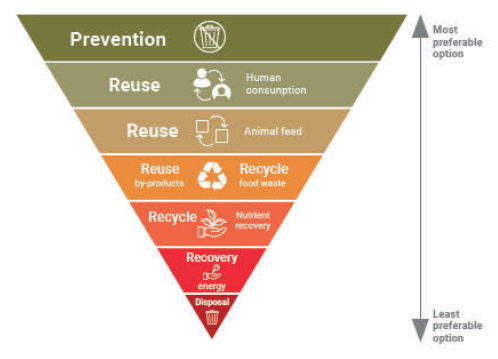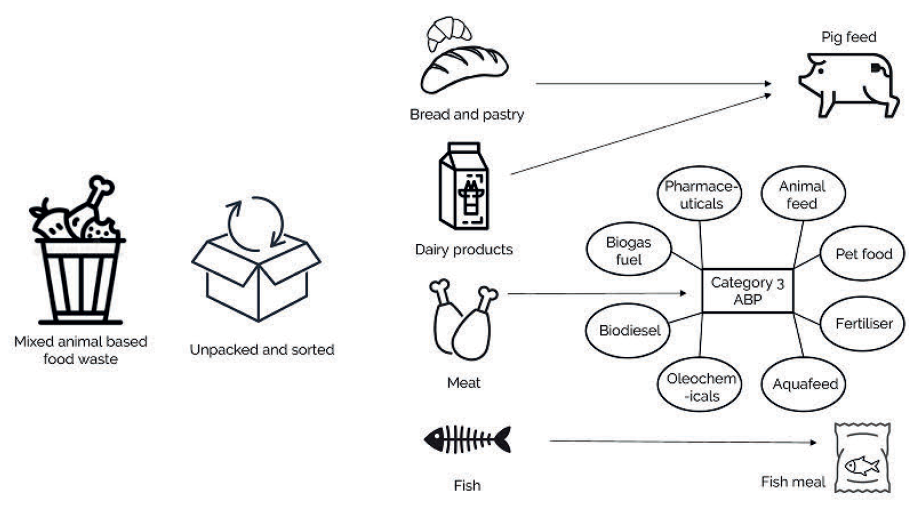Case Study 10
Valorisation of former foodstuffs from retail
Food loss and food waste are a global challenge. According to the United Nations Food and Agriculture Organisation (FAO), about a third of all food produced around the globe is lost or wasted at some point in the food supply chain, from farm to fork.
In the EU, this amounts to around 87.6 million tonnes of food every year, roughly 173 kg per person.
The sources of food waste are illustrated in the chart below.
Abapor, part of the ETSA Group, Portugal, collects former foodstuffs containing animal products from modern retail and traditional markets across Porgugal.
The collections are unpacked and manually segregated into several products with various sustainable applications, giving maximum value from these materials which would otherwise end up as waste.
"Around 20.000 T of food waste per year is re-used and around 1.000 T of packaging waste is recycled."

Abapor provides a collection service for former foodstuffs containing products of animal origin to the major retail groups and local markets across the country. Products collected include packaged meat, fish, dairy products, bread, pastry and derived products thereof.
Regular collections are made from chilled collection points and transported to the Abapor processing facility in Corouche, 100 km from Lisbon, in refrigerated trucks. Here they are unloaded and stored in a refrigerator building awaiting handling. The chilling undertaken at the collection, transport and processing facilities guarantees the preservation of the products to enable them to be utilised most sustainably.
Any packaging is removed and the products are separated by type. Meat products are sent to ETSA's Category 3 animal by-product (ABP) processing factory for production of animal fat and processed animal protein, whereas fish products are sent to fishmeal plants. Dairy products, mainly milk and yoghurt are unpacked and shipped to authorised pig breeding farms for pig feed, as are bread and pastry.
This is illustrated in the figure below:

Case Study 10 - Version 1, October 2023